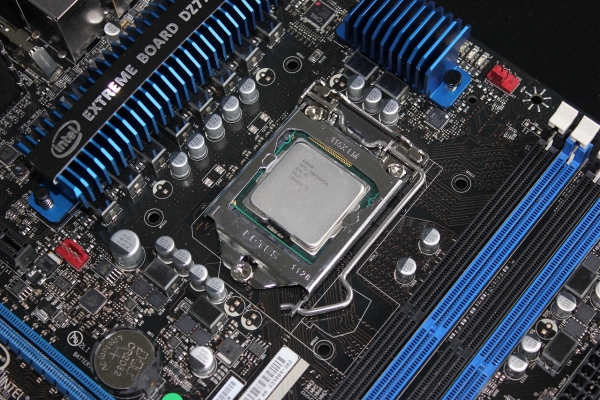Final Thoughts
When put to the test we see that the Ivy Bridge architecture isn't greatly different to Sandy Bridge, but we were expecting that. Many of our real-world application tests such as Excel 2010, WinRAR, and Photoshop CS5 saw very little difference in performance between the new Core i7-3770K and the older i7-2600K.
There were instances where the Core i7-3770K was ~10% faster, such as Fritz Chess 13, and then we saw the biggest gains in our encoding benchmarks. Here the Core i7 3770K was 10-17% faster than the i7-2600K.
Gaming with a discrete graphics card such as the GeForce GTX 580 saw the Core i7-3770K provide slightly more performance than the i7-2600K, but nothing to write home about. Power consumption was more impressive, taking 11% less power than the i7-2600K while performing on average 17% faster.
We were once again disappointed with the on-die GPU's performance. We have no doubt the new Intel HD 4000 graphics will mark a considerable improvement on the mobile side, as ultrabooks will welcome the added performance and efficiency bump with grace.

On the desktop however, Intel's new solution is still slower than that of AMD's A8-series Llano APU. Moreover, the majority of the more affordable Ivy Bridge processors will be fitted with the slower HD 2500 graphics which we suspect will be comparable to that of the HD 3000 graphics featured on the i7-2600K. Like its predecessors, the HD 4000 graphics are not fit for gaming. We focused on medium quality settings rather than low, and ran tests at a low resolution of 1280x800, yet the results were still mediocre when compared to the competition.
Even though Intel's marketing copy suggests otherwise, their integrated GPUs shouldn't be targeting gamers at all. For professionals and the average user, the Intel HD 4000 will likely suffice depending on the requirements. Ivy Bridge adds support for triple monitor output and higher resolutions (2560x1600), and on the mobile side, we are keen about WiDi (wireless display) receiving a more widespread adoption.
For consumers the arrival of Ivy Bridge chips can only be seen as good news. For those already invested in the LGA1155 platform it's great, as it's possible to take advantage of these new 22nm processors on existing motherboards. For newcomers, the Ivy Bridge architecture brings about an updated platform that provides more performance, better efficiency, and a few new features at a similar price point to that of Sandy Bridge.
score
Pros: Intel keeps delivering the best desktop processor money can buy. Great efficiency and features. Overclocking is well supported on the 'K' processor. Backward platform compatibility is a big win for consumers.
Cons: Integrated graphics handle well most tasks but are not fit for gaming, perform behind AMD's A8 APUs.
